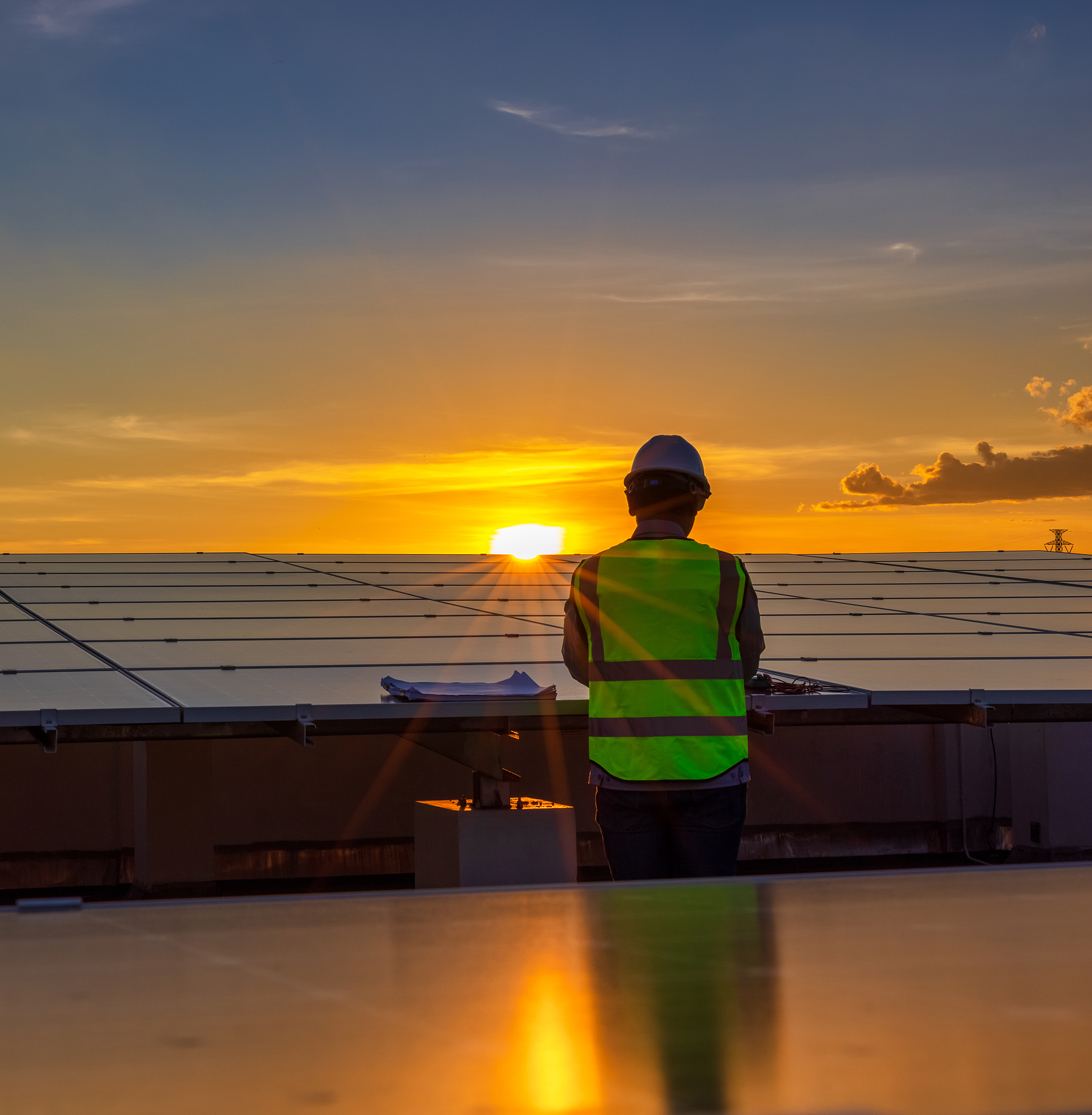LEARN MORE ABOUT FIRST SENTIER INVESTORS
Three Minutes With
How does First Sentier support responsible property investment?
Firstly, the World Business Council for Greenhouse Gas Emission Protocols and Scope 1, 2, and 3, do not fit very well with the real estate sector. A lot of the public disclosures coming out of carbon emissions of these buildings and portfolios do not show a full picture.
First Sentier investors have developed their own in-house methodology to assess their portfolios and assets for a more accurate picture of the amount of carbon emissions that these portfolios and buildings are putting into the atmosphere. There is a lot of analysis that is undertaken, and we have had Ernst & Young independently assure our operational carbon disclosures.
Secondly, it is about taking these carbon characteristics and this carbon information, then engaging with the landlords directly. We can provide information and a valuation framework to landlords which can help them move towards that path of
net zero.
The global real estate security sector is extraordinarily large, made up of over two trillion US dollars' worth of assets. The asset quality is extraordinarily high. The great majority of the world's best buildings have been securitised into publicly traded markets. These are some of the largest landlords in the world.
The cashflows coming out of these high-quality buildings are very, very secure and they offer an excellent inflationary hedge. When we combine the work that is being done to minimise energy intensity and minimise carbon intensity and emissions to mitigate those future risks on the cost of carbon offsets going up and the focus on carbon neutral tenancies, we believe that the real estate security sector is very well-positioned.
What makes green property a more attractive investment?
It is rentability; because these buildings tend to be more modern, they're more energy and carbon efficient, they are cheaper to run for the tenant.
On top of that, landlords of these modern buildings can also offer carbon neutral tenancies. That attracts a larger tenant pool, which means the cashflows coming out of these buildings are more secure. Those more secure cashflows can become very valuable annuity streams. With investors like us, the more security we have over the cash flows, the lower the required return, which increases valuations.
We can provide information and a valuation framework to landlords which can help them move towards that path of net zero
As the world progresses on its journey to net zero,
the real estate sector has a lot of heavy lifting to do
Investors are focused on net zero and decarbonisation – how relevant is this for global property investments?
I understand how important that focus is: 40% of greenhouse gas emissions come from real estate, 28% from operational carbon associated with being housed in the buildings and a further 12% from embodied carbon associated with development.
As the world progresses on its journey to net zero, the real estate sector has a lot of heavy lifting to do. The other benefit to focusing on the decarbonisation of real estate is the modernisation of these assets and helping to get them in a position where they are more energy efficient.
These assets are going to be cheaper to run and that cost saving is typically shared between the landlord and the tenant. There is a true economic benefit, a valuation gain.
You can
watch the interview here
or read his
views below
With 40% of greenhouse gas emissions coming from real estate, the sector has a lot of heavy lifting to do as the world progresses on its journey to net zero.
First Sentier Investors’ Stephen Hayes, Head of Global Property Securities explains how relevant net zero is for the global property sector, what steps the sector can take to reduce the carbon footprint of buildings, what makes a green property a more attractive investment, and how First Sentier supports responsible property investment.
Scroll down
Three
Minutes
With

First Sentier Investors’ Stephen Hayes, Head of Global Property Securities on the importance of the global property sector for investors focused on net zero
What practical steps can the property sector take to reduce the carbon footprint of buildings?
With regards to operational carbon through maintenance CapEx programs, introducing things like light emitting diodes, moving away from incandescent lighting, upgrading all the plant and equipment (heating, ventilation, air conditioning systems) and introducing smart metering and sensor technologies, particularly in commercial buildings.
Also, where do you source your energy from? Are you sourcing it from renewable sources onsite? If you have the area on the roof and the orientation of the sun, solar rollout programs can be very energy efficient, and you can get a reasonable economic return from it. Through a new building, the introduction of geothermal systems into a new development can help maintain the ambient temperatures of the buildings. So, from an operational standpoint, there are a number of programs that can get put in place to reduce carbon emissions.
With regards to embodied carbon associated with development, that is much more complicated. It is difficult to measure embodied carbon; but important that most landlords attempt to do that and then look to put programs in place to reduce embodied carbon through design and the use of building materials through development. Then offsetting the rest and underwriting that into the cost of the development.
If we can deliver carbon neutral development and modernise assets as well as these other programs to improve the energy efficiency of existing buildings, we are progressing a long way to along our net zero pathway.

marketing communication
MENU
Three Minutes With
INTRODUCTION
Video interview
ESG considerations
Environmental impact
responsible investment
CLOSE MENU X
How does First Sentier support responsible property investment?
Firstly, the World Business Council for Greenhouse Gas Emission Protocols and Scope 1, 2, and 3, do not fit very well with the real estate sector. A lot of the public disclosures coming out of carbon emissions of these buildings and portfolios do not show a full picture.
First Sentier investors have developed their own in-house methodology to assess their portfolios and assets for a more accurate picture of the amount of carbon emissions that these portfolios and buildings are putting into the atmosphere. There is a lot of analysis that is undertaken, and we have had Ernst & Young independently assure our operational carbon disclosures.
Secondly, it is about taking these carbon characteristics and this carbon information, then engaging with the landlords directly. We can provide information and a valuation framework to landlords which can help them move towards that path of
net zero.
The global real estate security sector is extraordinarily large, made up of over two trillion US dollars' worth of assets. The asset quality is extraordinarily high. The great majority of the world's best buildings have been securitised into publicly traded markets. These are some of the largest landlords in the world.
The cashflows coming out of these high-quality buildings are very, very secure and they offer an excellent inflationary hedge. When we combine the work that is being done to minimise energy intensity and minimise carbon intensity and emissions to mitigate those future risks on the cost of carbon offsets going up and the focus on carbon neutral tenancies, we believe that the real estate security sector is very well-positioned.



What practical steps can the property sector take to reduce the carbon footprint of buildings?





INTRODUCTION | VIDEO INTERVIEW | How relevant | Practical steps | Green property | How we help
HOW WE HELP
GREEN PROPERTY
Practical steps
HOW RELEVANT
VIDEO INTERVIEW
INTRODUCTION
INTRODUCTION | VIDEO INTERVIEW | How relevant | Practical steps | Green property | How we help
HOW WE HELP
GREEN PROPERTY
Practical steps
HOW RELEVANT
VIDEO INTERVIEW
INTRODUCTION







Green Property






